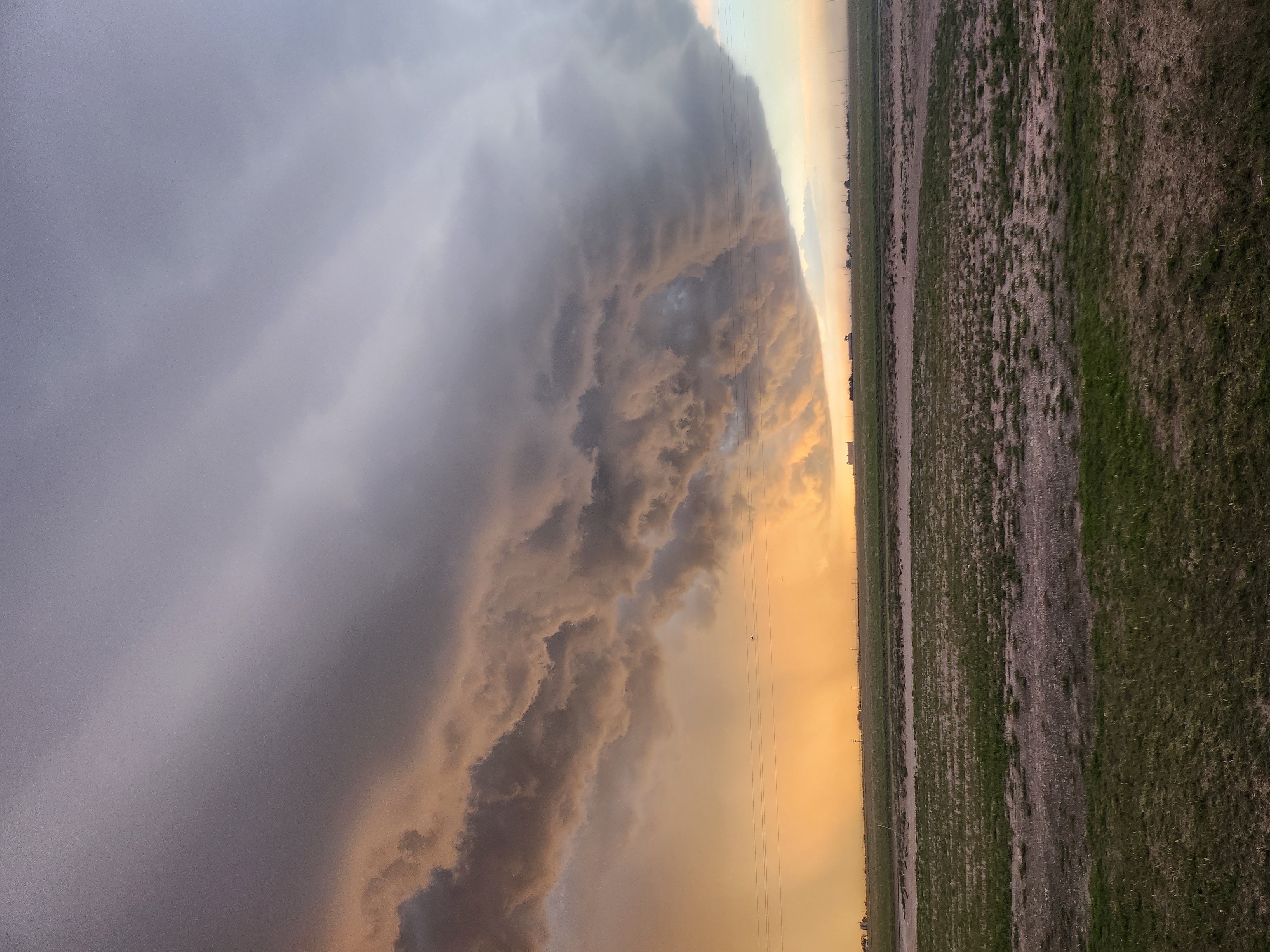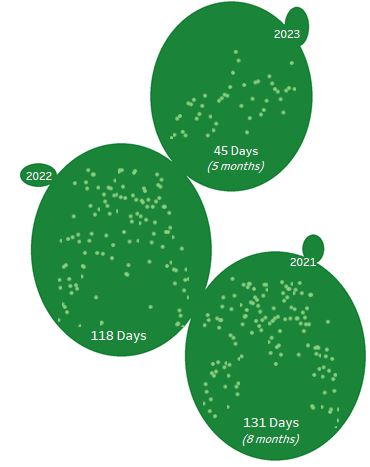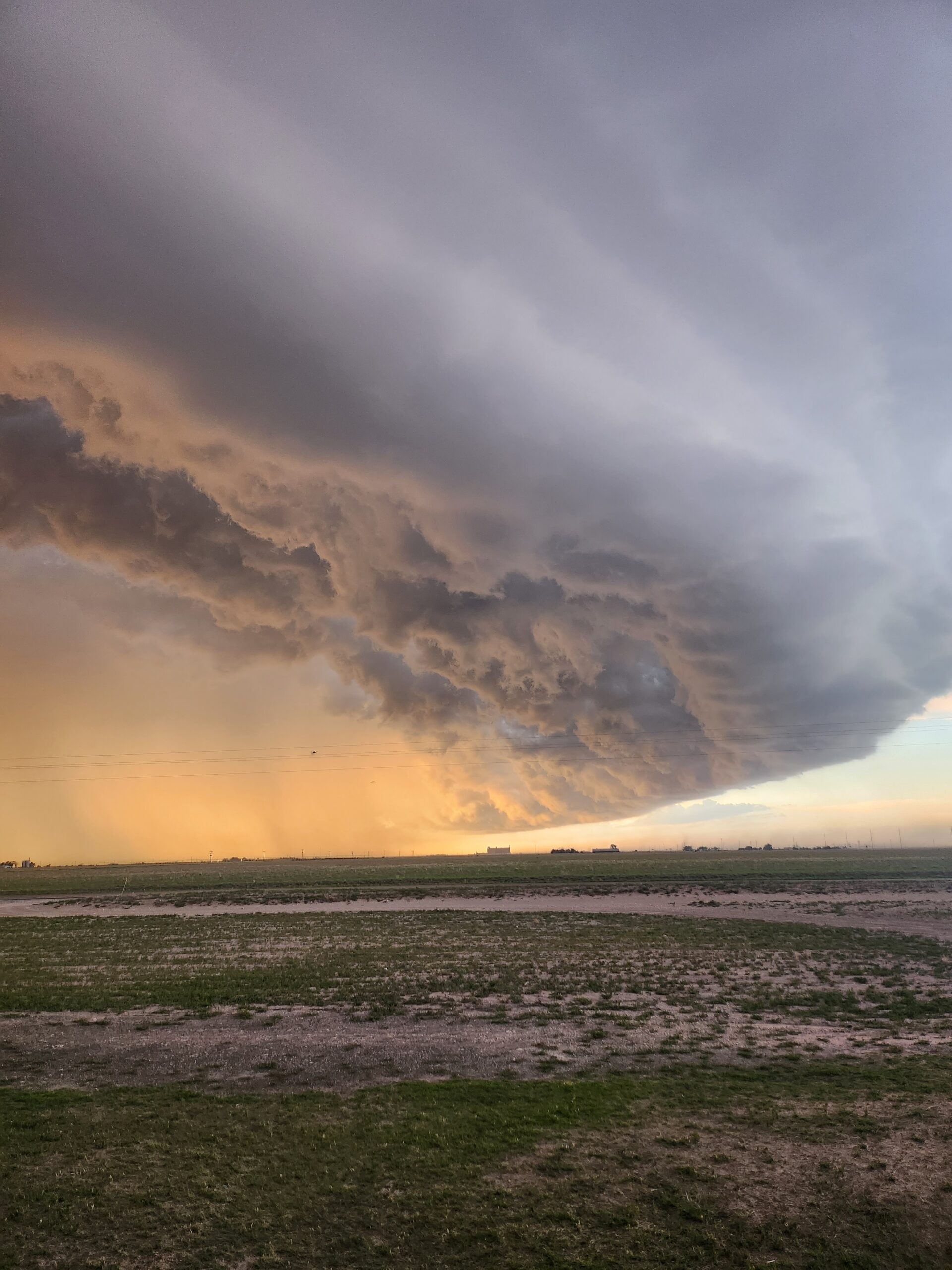When I worked in Corporate world, weather was nothing more than a contributing factor to traffic or a change to my wardrobe, but on a farm weather affects everything.

Since initiating West Camp Nopal every day has been an experiment to see how the nopal will react to the weather. The nopal favors temperatures between 59°F (15°C) and 77°F (25°C) and the Muleshoe area has temperatures ranging below freezing 32°F (0°C) to temperatures above 100°F (38°C). Fortunately, the nopal is very a very tolerant plant, but with such extreme range it is important to keep a good record of key data. Analyzing the data and pinpointing the nopals’ reaction to the weather helps us identify a temperature range in which the nopal can survive, as well as, the effects of drought and precipitation.
This illustration shows the number of days in the past 2 years (5/2021 – 5/2023) that averaged within the optimal temperature range of 59°F (15°C) and 77°F (25°C). Days within this range are optimal for the nopal to reach maximum photosynthetic productivity.

Muleshoe has long winters with several days below freezing 32°F (0° C). Measurements on the nopals’ ability to survive in these types of temperatures have not been recorded or thoroughly studied. Due to this limitation, it is important to analyze the data and understand how freezing temperatures affect the nopal. The following illustrates the number of days in the past 2 years (5/2021 – 5/2023) that recorded temperatures below freezing 32°F (0°C).

Temperatures above 86°F (30°C) can reduce the nopals’ photosynthetic activity by up to 70%. Summers in Muleshoe tend to be in the mid to upper 90°F (32.2°C). The following illustrates the number of days in the past 2 years (5/2021 – 5/2023) that recorded temperatures above 86°F (30°C).

Although the nopal is drought tolerant, precipitation can help the plant more effectively produce fruits and new cladodes. Precipitation is especially important during planting, it helps the plants more quickly establish their root systems. As of May 2023, we have had historical rains exceeding prior yearly totals for the same months (Jan – May) and it is exciting to see how the nopal will react to this phenomenon.
The following illustrates rainfall accumulation in inches for the prior 10 years for the months of January – May.

So, what does all this information mean? Because there are only 2 years of data, it is hard to determine exactly what to expect BUT we can assume the following:
- Approximately, 1/3 days a year will fall within the optimal temperature range 59° F (15° C) and 77° F (25° C). Impact on the nopal will be optimal photosynthetic activity.
- Approximately, 1/3 or less days a year will have temperatures below freezing 32° F (0° C). Impact on the nopal will be reduced photosynthetic activity with danger of plant loss or damage.
- Approximately, 1/3 more or less days a year will have temperatures above 86° F (30° C). Impact on the nopal will be reduced photosynthetic activity.
2023 is particularly different in terms of precipitation with record highs for the initial 5 months of the year. The weather phenomenon of El Nino is predicted to bring higher rainfall to the area and could present a great opportunity for establishing new plants. Alternatively, the rain may create disease/mold or attract pests to the plants. Already, weeds have overgrown requiring immediate and constant removal before they overtake the nopal.
The weather is unpredictable but with diligent record keeping and analysis, it can assist in determining the impact to the nopal. Having this information will help us establish best practices for planting, establishment, maintenance and sustainability of the plant. With more time (data) we will have a much more clear picture of how the nopal reacts to the weather. In the meantime, we will continue to watch the sky for rain clouds and work around whatever weather comes our way 😊.
